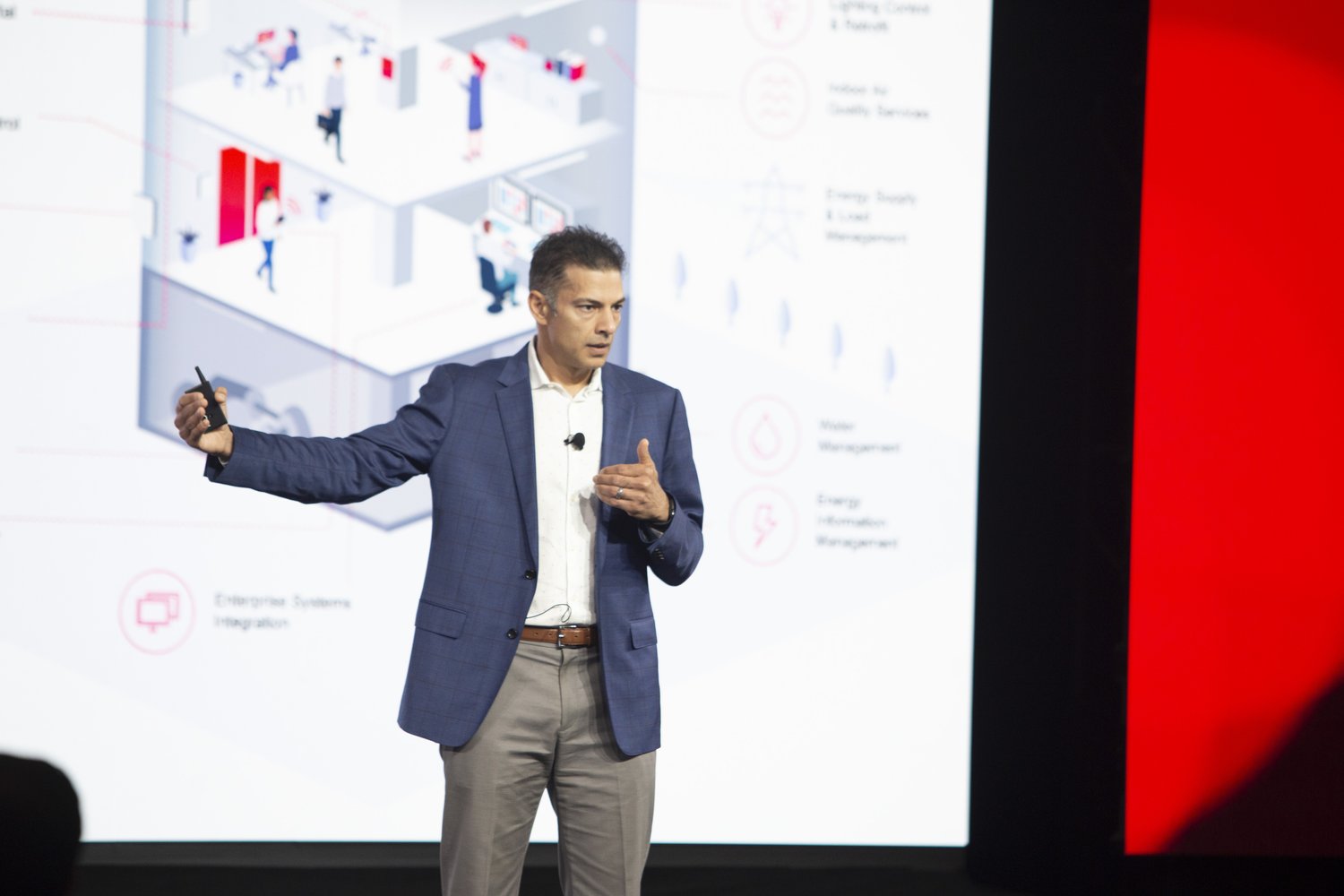Next month, BuiltWorlds welcomes Bluebeam CEO Usman Shuja (pictured right) as a featured speaker at our Toronto Summit. A veteran technology executive, Shuja is newer to the world of construction—September marks one year at Bluebeam—but he clearly recognizes some of the sector’s innovation challenges, like the need to better adapt technologies to workers in the field and for closer collaboration between technology and construction experts.
In anticipation of the conference, we asked Shuja to share his thoughts on the industry, AI regulation and his vision for Bluebeam.
Edited for clarity.
You’ve spent your career in technology, but you’re relatively new to the construction sector. What has surprised or excited you most about the industry?
I’m pleasantly surprised by the passion for technology in the AEC industry, despite its reputation as a technology laggard. While data supports this view, small changes can yield significant impact.
Currently, technology and construction talents often operate separately, with little overlap. As a panelist at a recent discussion about AI applications in architecture, design and construction at the MIT Media Lab, which boasts top AI and architectural students, I asked the standing-room-only audience to raise their hand if they were experts in both AI and construction. Not a single hand went up.
This highlights the need for greater collaboration between construction and technology communities. Rather than technology being developed independently and later considered by construction, both should co-develop tools to drive industry progress together.

September is your one-year anniversary serving as Bluebeam’s CEO. What’s been the most important or impactful part of your role to date, and what’s your top priority for year two?
The most important part of my role to date has been putting “boots on the ground” and meeting our employees, customers and partners in person. So much of our world is virtual now but it’s still very important to meet people, see what they do, talk face-to-face about their challenges, and make those connections to partner effectively. We have users and partners who trust us and seeing firsthand their enthusiasm for Bluebeam has been a major motivator.
For year two, I will continue to lean into the challenge of expanding the use and application of Bluebeam. Bluebeam is an incredible solution, well-loved by those who know and use us, however, we have so much more ground we can cover. By reintroducing our capabilities to architects, expanding our solution to fieldworkers with GoCanvas, and European expansion of our products, the potential for growth is abundant.
Bluebeam revolutionized the industry by digitizing printed drawings and how we use them—what’s the next revolution?
At Bluebeam, although we understand the importance of “revolutionary” technology, we also believe in making enhancements to our products that will delight our customers with innovation and a simple, elegant experience. Two examples of how we aim to do this are through AI innovations and connecting with the fieldworker.
I worry that there’s a growing disconnect between how these technologies are being built and marketed, and how workers in the field—those pouring concrete and setting steel beams—communicate, operate and think.
With AI, we believe it should be about pragmatic innovation that enhances the customer experience, productivity and value they get from Bluebeam. Not just AI for the sake of AI. Through Bluebeam Labs we’ve invited customers into our innovation process earlier, to co-create our solutions with much more engagement and feedback.
In terms of the fieldworker, as I continue to have conversations with customers and observe the idiosyncrasies of the millions of diverse people that comprise the construction industry workforce, I worry that there’s a growing disconnect between how these technologies are being built and marketed, and how workers in the field—those pouring concrete and setting steel beams—communicate, operate and think. That’s why I’m excited about the recent acquisition of GoCanvas to the Nemetschek Group. GoCanvas provides fieldworker collaboration software that digitizes traditionally paper-based processes, simplifies inspections, improves safety, and maximizes compliance.

As a student at the Kennedy School, you studied innovation policy and the ethical application of technology. Where do we need to show more vigilance on that front in the construction industry, which is evolving at top speed?
Ensuring the development of AI tools using unbiased and balanced data is crucial not only in the construction industry but across various sectors.
Companies must take proactive measures to ensure that AI products they develop are built on datasets that are not only unbiased but also transparent.
Take, for example, facial recognition technology powered by generative AI. If the datasets used to train such AI systems are skewed towards specific ethnicities, it will inevitably embed unfair biases and lead to unjust outcomes. Thus, it is imperative to strive towards developing AI tools that mitigate these risks, promoting fair and equitable technological advancements.
Looking ahead, I anticipate a heightened focus on regulating or self-regulating AI. Companies must take proactive measures to ensure that AI products they develop are built on datasets that are not only unbiased but also transparent. However, the responsibility to establish comprehensive standards and regulations will also rest with governments. They will play a pivotal role in defining the frameworks that govern the ethical and fair use of AI technologies. We must strike a balance between regulation and self-regulation to foster responsible innovation.
Finally, looking ahead to the Toronto Summit, if there is one takeaway you’d like to leave the audience with from your discussion, what would it be?
That Bluebeam is here for our customers and partners around the globe to help make their lives simpler. I encounter Bluebeam users daily that praise how our solution saves them multiple hours – daily.
In the AEC industry, our product resonates deeply. It was meticulously crafted with their input and tailored specifically for their needs, ensuring that functionalities related to drawings, document management, design review, and more align seamlessly with industry use cases and workflows. If you’re not yet a customer, come talk to me. I want to know how we can do better and address your company’s needs.
Want to meet Shuja? Join us in Toronto, Sept 10-12!


Discussion
Be the first to leave a comment.
You must be a member of the BuiltWorlds community to join the discussion.